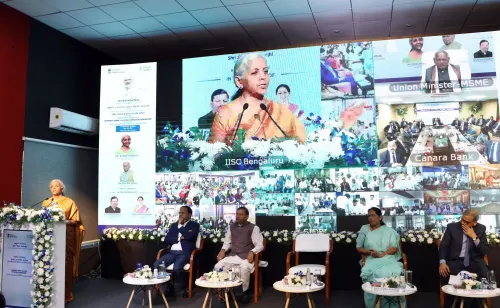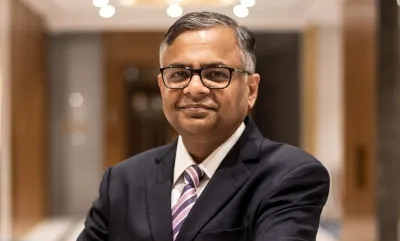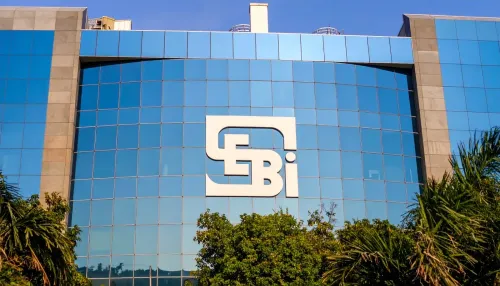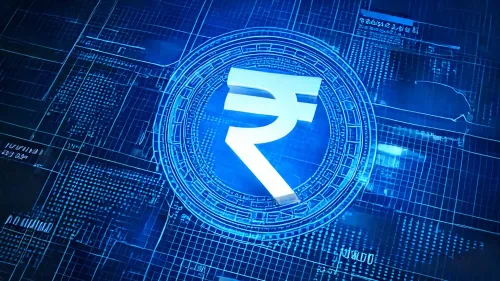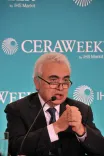Could the India Development and Strategic Fund Propel Long-Term Growth?

Synopsis
Key Takeaways
- Creation of the IDSF aims for long-term economic resilience.
- Two-pronged structure: Developmental and Strategic arms.
- Target corpus of $1.3 to $2.6 trillion by 2047.
- Focus on critical sectors: infrastructure, energy, technology.
- Government control with professional management.
New Delhi, Nov 9 (NationPress) The leading business organization CII has put forward a proposal for the establishment of an India Development and Strategic Fund (IDSF), envisioned as a sovereign-backed, expertly managed entity aimed at financing India's long-term growth, resilience, and global economic security.
Designed as a dual-arm national fund, the IDSF aims to gather patient, long-term capital to enhance India's domestic productive capacity and safeguard crucial economic interests internationally, as detailed in a statement from CII.
The IDSF is set to consist of two coordinated yet distinct arms. The Developmental Investment Arm will prioritize financing for long-term domestic projects such as infrastructure, clean energy, logistics, industrial corridors, MSME expansion, education and skills development, healthcare, and urban infrastructure.
This arm will offer patient equity and blended financial solutions for commercially viable projects that necessitate long-term investment. Acting as an anchor investor, it will attract pension funds, sovereign wealth funds, and institutional investors both from India and overseas, according to the statement.
CII has proposed that the existing National Investment and Infrastructure Fund (NIIF) be evolved into the Developmental Arm, utilizing its governance framework and global investor network.
The Strategic Investment Arm will focus on acquiring and securing overseas assets that are vital for India’s long-term economic and security objectives. These assets include energy resources such as oil and gas fields, LNG infrastructure, and green hydrogen partnerships; essential minerals such as lithium, cobalt, and rare earths; cutting-edge technologies like semiconductors, AI, and biotechnology; and key global logistics and port assets. This arm will empower India to proactively own critical supply chains and technologies shaping the future global economy.
The industry body estimates that with disciplined design and funding, the IDSF could amass a managed corpus of between $1.3 to $2.6 trillion by 2047, matching the ambitions of the world’s leading sovereign investors.
The proposed capitalisation strategy includes an initial budgetary allocation to establish credibility, followed by consistent allocation of a portion of asset-monetisation proceeds from roads, transmission lines, ports, and spectrum into the Fund rather than merely reducing deficits. Over time, a share of the Government’s equity in select public sector enterprises could be transferred to the Fund, transforming these enterprises into vehicles for India’s global expansion instead of just disinvestment candidates, as per the CII statement.
Additionally, the Fund could issue specialized instruments such as infrastructure, green, and diaspora bonds to attract long-term domestic and international savings while collaborating with multilateral and bilateral partners. Once sufficient macroeconomic buffers are in place, a small portion of India’s foreign exchange reserves could be allocated for overseas strategic acquisitions in sectors like crucial minerals and energy.
CII emphasizes that the Fund should maintain majority ownership and strategic control with the Government of India, while being managed by a professional board that combines senior government representation with global investment expertise. Two separate investment committees would oversee the Developmental and Strategic arms, ensuring clear focus and accountability.
The organization recommends that the Fund publish a regular “IDSF Review”, complete with a public dashboard detailing corpus size, portfolio composition, sectoral and geographic exposure, and performance metrics.
CII Director General Chandrajit Banerjee stated, “This proposal recognizes that India’s ambitions in infrastructure, energy transition, manufacturing, technology, and human development will require financing that exceeds what annual budget allocations can provide. The Fund would facilitate the mobilization of domestic and global savings while recycling national capital from matured assets into new productive capabilities.”

